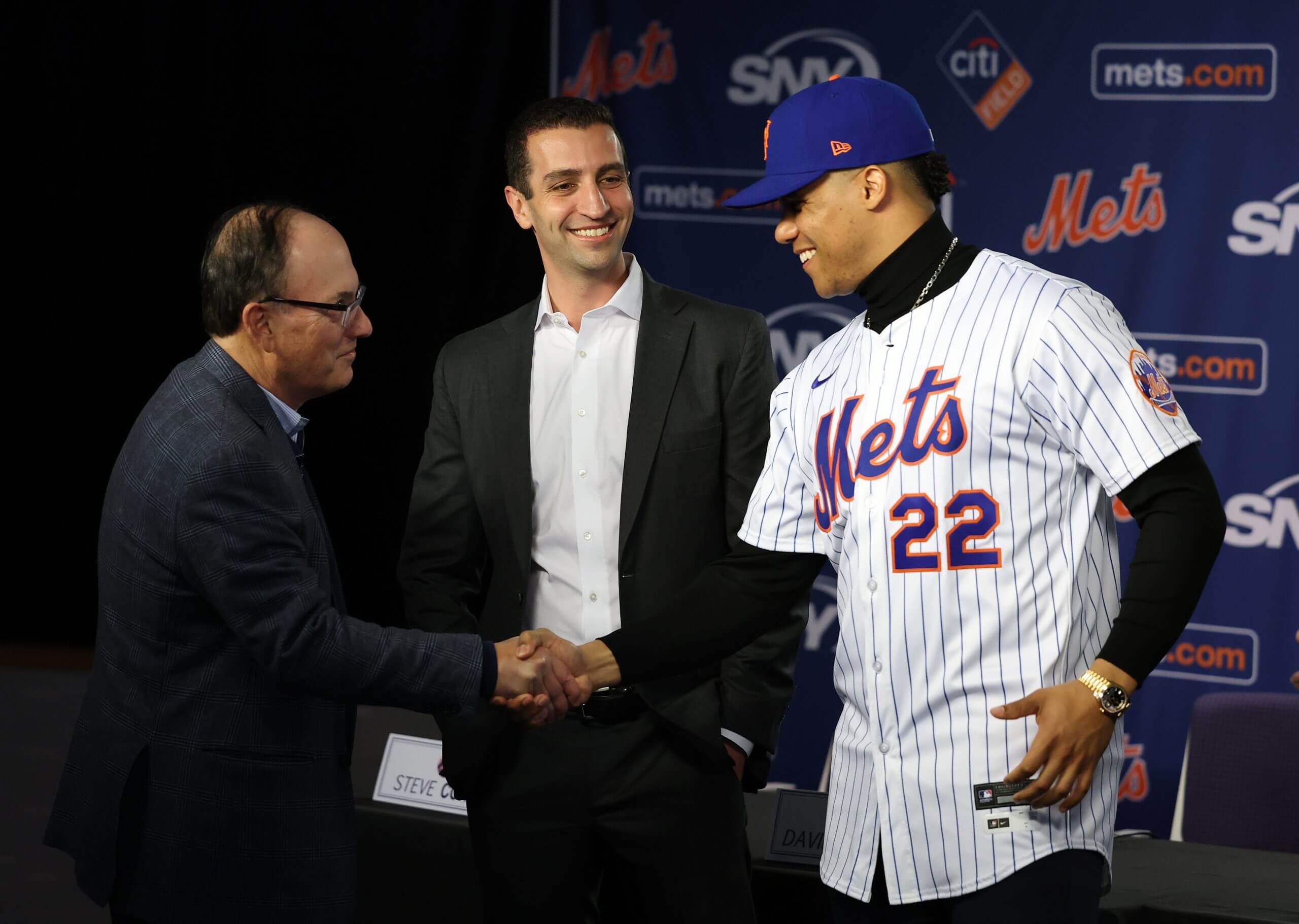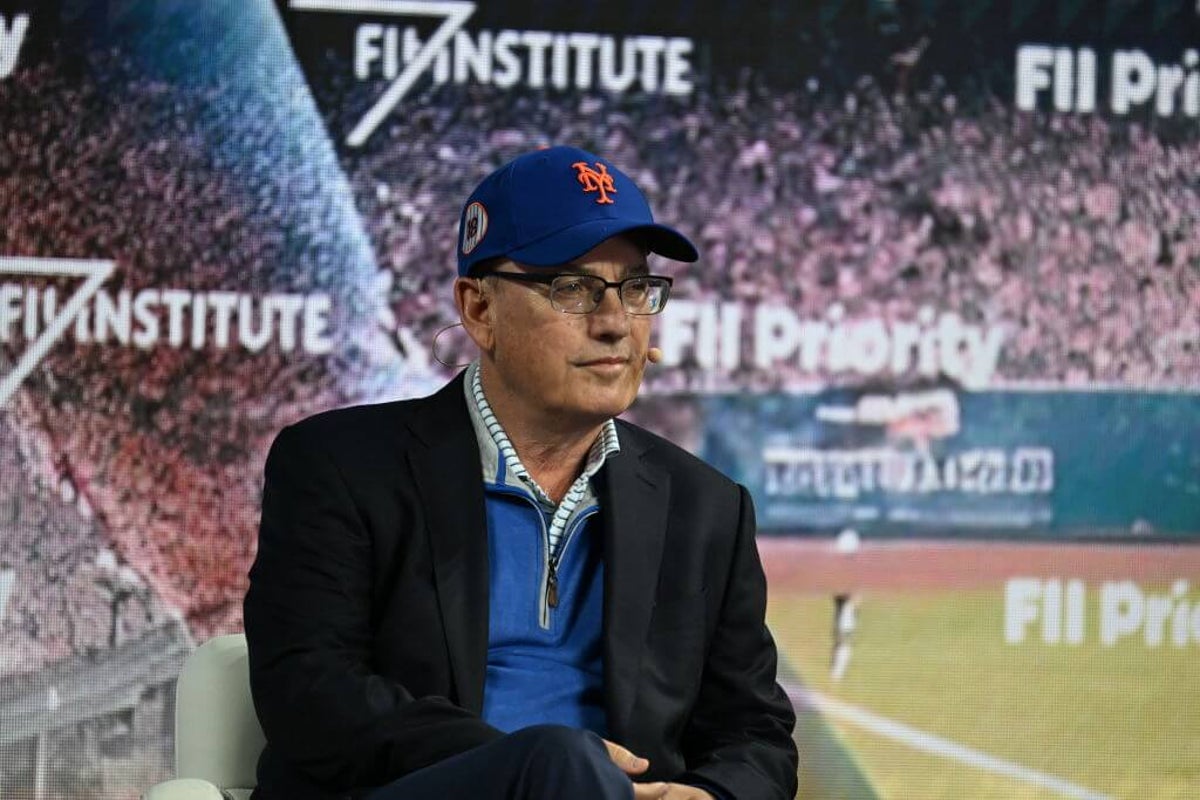Last week, I looked at where the Mets’ budget stands entering a fascinating offseason, with a player payroll about $217 million and a tax payroll of about $240 million. (I forgot to include the ~$20 million that goes toward player benefits and the pre-arbitration bonus pool in the initial tax calculations.)
Today, let’s examine what the Mets would look like at different budgets for 2026. In each scenario, I consider the club’s main needs to be replacing Pete Alonso and Edwin Díaz (who I’m assuming will opt out) while adding to the front end of the starting rotation.
These are meant to be pretty broad looks at each price point; I provide some specific players because that makes it a bit more tangible, but I’m not at the point of recommending any of these moves. I’ll save that for my blueprint for the offseason in a few weeks, when we know more about the free-agent landscape.

Unlike last year, getting under the initial tax looks largely untenable for the Mets. (Al Bello / Getty Images)
What kind of team could the Mets build while staying below the luxury tax ($244 million)?
The Mets’ best bet to get under the luxury tax was last offseason, and it involved passing on Juan Soto. Given where the tax number is entering this winter, New York would be sacrificing a fair amount of talent to dip under the tax in 2026. But let’s try.
There’s probably a path or two to getting under the tax while keeping either Pete Alonso or Edwin Díaz. I don’t think that generally ends with a good, all-around baseball team in 2026. So, if the Mets actually wanted to dip below the luxury tax, we have to make a few assumptions off the bat:
- Alonso and Díaz are leaving in free agency
- Jeff McNeil and Kodai Senga are being traded
- Nick Madrigal, Tyrone Taylor, Tylor Megill, Reed Garrett and Max Kranick are being non-tendered
- The best additions are going to be made on the trade market
Even if we let Alonso and Díaz walk while dealing McNeil and Senga for no guaranteed salary coming back, we’ve got just under $30 million to find solutions at first base, second base, center field, designated hitter, the top of the rotation and the back end of the bullpen. It’s going to take some creativity.
The first step is filling in internally with youth. So Mark Vientos is the DH, Ronny Mauricio and Luisangel Acuña are keeping second base warm for Jett Williams and Carson Benge is grabbing the reins in center. Nolan McLean is part of the rotation (of course), and Dylan Ross and returning rehabbers Drew Smith and Adbert Alzolay are all slated for the pen.
To fill Alonso’s shoes at first base, let’s trade some very good young pitching to the Athletics for Tyler Soderstrom. It’s tough to break in so many young pitchers in New York at the same time, and the A’s have a roster imbalance with more offense than arms. It could be a good fit, and Soderstrom hasn’t hit arbitration yet. (The issue is Soderstrom hits left-handed, and you’d probably prefer a right-handed replacement for Alonso.)
If we count on A.J. Minter to step in for Díaz in the ninth inning, we can add one mid-range reliever — think in the Ryne Stanek mold — to help late in games. Maybe that’s Shelby Miller.
That leaves about $18 million to add to the top of the rotation, and the problem is $18 million is only mid-rotation money in free agency. So let’s go back to the trade market. The Mets could give up a bunch for Joe Ryan, a bit less for Mitch Keller (who would just fit under the tax here) or take a gamble that someone like Ryan Weathers or Bryce Miller would blossom into a frontline pitcher.
So a lineup would look like:
SS Lindor
RF Soto
LF Nimmo
DH Vientos
1B Soderstrom
C Alvarez
3B Baty
2B Acuña
CF Benge
And a rotation of:
Keller
McLean
Holmes
Manaea
Peterson
The top five in the bullpen would be Minter, Miller, Brooks Raley, Smith and Huascar Brazobán.
The argument for a $244 million payroll: You get underneath the luxury tax and reset the penalties ahead of the unknown parameters of the next collective bargaining agreement. The penalties could be much harsher by 2027 than they are now.
The argument against a $244 million payroll: These are pretty self-evident. The final roster isn’t as strong as the one that just finished a disappointing season, and you’ve also had to deal away significant prospect talent to fill major-league holes. (Requiring guys like Vientos, Mauricio and Acuña to play real roles also limits your ability to move them this winter, for instance.) Frankly, I think getting under the tax for 2026 is essentially a non-starter.
What kind of team could the Mets build while preserving their draft position ($284 million)?
This makes more sense as a long-term target for the Mets, as the third tax threshold ($40 million above the initial one) involves losing 10 spots on your first pick in the following draft.
With $40 million more to work with than our first scenario, the Mets wouldn’t have to non-tender so many players and could keep one of Alonso or Díaz. If it’s Alonso, you can envision the same team as above, except it doesn’t trade for Soderstrom or deals Vientos for pitching help. If it’s Díaz, you’d only need to deal one of McNeil or Senga, and there’d be room to add a pitcher like Keller in free agency — whoever ends up lowest in the Brandon Woodruff, Lucas Giolito, Zac Gallen range. (Or, if he’s posted, Japanese right-hander Tatsuya Imai.)
Let’s keep Díaz for the thought experiment. The lineup then would look like:
SS Lindor
RF Soto
LF Nimmo
DH Vientos
1B Soderstrom
C Alvarez
3B Baty
2B Acuña
CF Taylor
The rotation could be:
Imai
McLean
Holmes
Manaea
Peterson
Senga
The top five in the bullpen would be: Díaz, Minter, Raley, Smith, Brazobán.
The argument for a $284 million payroll: The team is better than the one spending $40 million less, and the farm system is impacted less by the drop in draft position than by the need to trade prospects to get under the tax. In the long run, this is probably a good target for the Mets, especially since it wouldn’t be a surprise to see the draft penalties become harsher in the next CBA.
The argument against a $284 million payroll: This still isn’t as good a team as the one that just went 83-79. That lineup is counting a lot on youth. The rotation would probably perform better over the course of the season, but it’s not as good as those of other contenders in the National League. Is preserving draft position really worth this?
What kind of team could the Mets build for the same payroll as 2025 ($340 million)?
Now we’re talking. We’ve got another $55 million on top of what we just spent, so Alonso is coming back on a shorter-term, high-AAV deal. (Or you could bring in someone at a similar price point, like Alex Bregman or Cody Bellinger.) McNeil and Senga aren’t going anywhere unless there’s a trade offer that really improves the 2026 team. That leaves time for both Benge and Jett Williams to start the year in the minors and force their way into the majors, and it retains a lineup that should score more runs than it did in 2025.
You could add a bigger name to the top of the rotation — perhaps a higher-ceiling gamble on Shane Bieber or Michael King. And you’d have room to add a pair of interesting arms in the bullpen beyond Díaz, like the aforementioned Shelby Miller and, say, Brad Keller from the Cubs.
The lineup would be:
SS Lindor
RF Soto
1B Alonso
LF Nimmo
2B McNeil
DH Vientos
C Alvarez
3B Baty
CF Taylor
The rotation would be:
Bieber
McLean
Holmes
Manaea
Peterson
Senga
The top five in the bullpen would be: Díaz, Minter, Raley, Miller and Keller.
The argument for a $340 million payroll: The Mets have spent in this range the last two years, so they clearly can afford it. And coming off a season as disappointing as 2025 is not the time to rein in spending. While the Mets are getting closer and closer to the time when their up-and-coming farm system can replace free-agent additions, they’re not there yet for 2026. Spending at their recent level is how to build the best team for next season.
The argument against a $340 million payroll: The Mets are so close to relying on that up-and-coming farm system that they should avoid locking themselves into any longer-term contracts in free agency. Doing so would run back too much of last season’s flawed roster, relying on older arms, older bats and less athletic gloves.
What does all this mean?
I like to do this thought experiment each year because it looks more specifically at what the budget can mean for the organization — and how it should prioritize its goals this winter. It’s easy to say the Mets should spend x dollars if you don’t examine what that means in practice.
But there are a few takeaways here:
- Unlike last year, getting under the initial tax — or even under the third threshold to preserve draft position — look largely untenable.
- The toughest task for the Mets will be discerning the best option to boost their rotation.
- If the desire is to get more athletic in the position player grouping, the best path might be internally.
